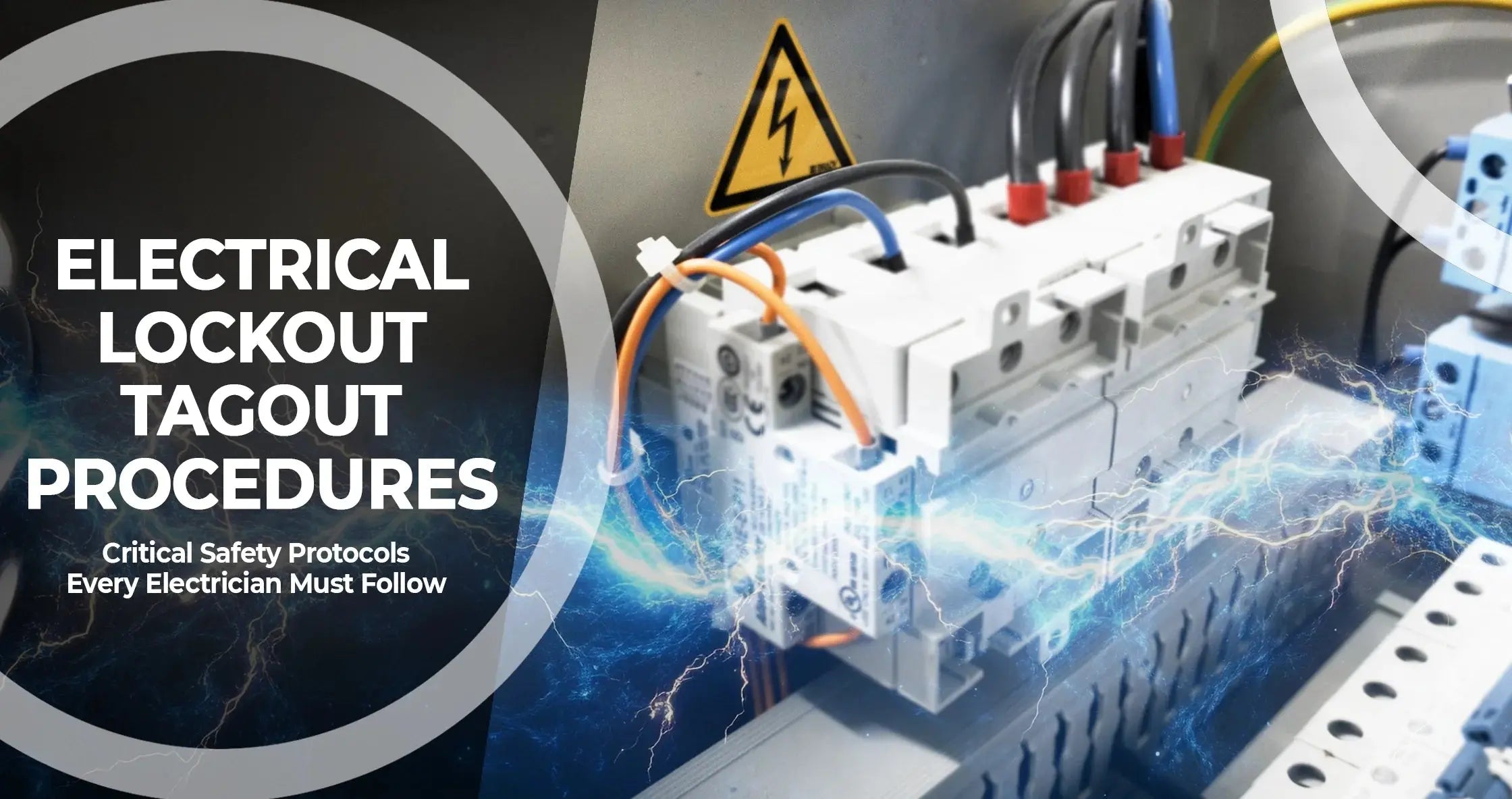Electricians face significant risks when working with live equipment, making electrical lockout tagout procedures crucial for their safety. Proper implementation of these protocols helps prevent injuries caused by unexpected energization or startup of machinery during maintenance.
Understanding Electrical Lockout Tagout
What is Electrical Lockout Tagout?
Electrical lockout tagout refers to a safety procedure that ensures machinery and equipment are properly shut off and cannot be started up again until maintenance or repair work is completed. This process protects workers from hazardous energy sources like electricity, mechanical energy, and hydraulic pressure.
The Occupational Safety and Health Administration (OSHA) mandates employers to establish an effective LOTO program to protect employees from hazardous energy releases. These programs include written procedures, employee training, regular inspections, and the use of authorized lockout/tagout devices.
Key Components of an Effective Program
An effective loto program involves several key components:
- Developing detailed written procedures for each piece of equipment.
- Training all employees on the importance of following loto electrical procedures.
- Conducting regular audits and inspections to ensure compliance.
Best Practices for Implementing LOTO Programs
Identifying Hazardous Energy Sources
Before starting any maintenance or repair work, it is essential to identify all potential hazardous energy sources associated with the equipment. This includes electrical circuits, hydraulic systems, and pneumatic pressures that could cause harm if accidentally released.
A thorough risk assessment should be conducted to determine the type of energy present, its voltage levels, and how it can be safely isolated.
Developing Clear Procedures
Once hazards are identified, develop clear and concise electrical lock out tag out procedure guidelines. These should specify steps for shutting down equipment, isolating energy sources, applying lockout devices, and verifying isolation.
Make sure these procedures are easily accessible to all relevant personnel and regularly updated as needed.
Selecting Appropriate Lockout Devices
Choosing Durable Equipment
When selecting lockout devices, prioritize durability and reliability. Devices should withstand environmental conditions in the workplace and remain secure throughout the duration of maintenance activities.
Standardized locks and tags help ensure consistency across different pieces of equipment and simplify training processes for employees.
Ensuring Compatibility
Ensure chosen devices are compatible with the specific types of machinery they will secure. For example, some locks may only fit certain switch configurations or valve designs. Regular testing verifies effectiveness under real-world conditions.
Maintaining and Inspecting LOTO Devices
Regular Maintenance Checks
To maintain optimal performance, conduct routine maintenance checks on all lockout/tagout devices. Look for signs of wear and tear, corrosion, or damage that could compromise functionality.
Schedule periodic inspections at least annually but consider more frequent evaluations depending on usage frequency and environmental factors.
Employee Training and Awareness
Train employees thoroughly on recognizing issues during inspections and reporting them promptly. Encourage open communication channels so concerns about device integrity can be addressed quickly.
Provide ongoing refreshers to keep knowledge current regarding advancements in technology and best practices related to loto electrical procedures.
Conclusion
Adhering to electrical lockout tagout procedures is vital for protecting electricians and other workers from dangerous situations involving unexpected machine startups or energy releases. By implementing comprehensive loto programs, selecting appropriate devices, conducting regular maintenance, and providing continuous education, organizations can significantly reduce risks associated with hazardous energy.
For high-quality lockout/tagout products, visit our website's collection of electrical safety solutions designed to meet industry standards while enhancing worker protection.
Frequently Asked Questions (FAQ)
What Happens If LOTO Procedures Are Not Followed?
Failure to follow proper lockout tagout procedures can result in severe consequences, including serious injury or death due to exposure to hazardous energy. Additionally, non-compliance may lead to hefty fines from regulatory bodies such as OSHA.
How Often Should LOTO Devices Be Inspected?
LOTO devices should ideally be inspected before every use; however, formal inspections must occur at least once per year according to OSHA guidelines. More frequent assessments might be necessary based on operational demands and environmental influences.
Can Employees Remove Another Person's Lockout Device?
No, only the individual who applied the lockout device is authorized to remove it unless special circumstances dictate otherwise through established override protocols. Unauthorized removal poses significant safety risks and undermines the entire system's effectiveness.


